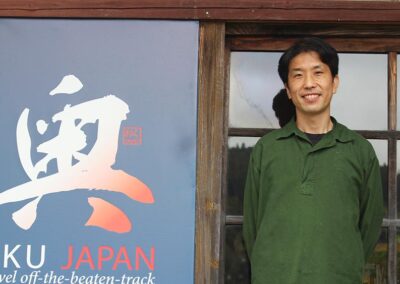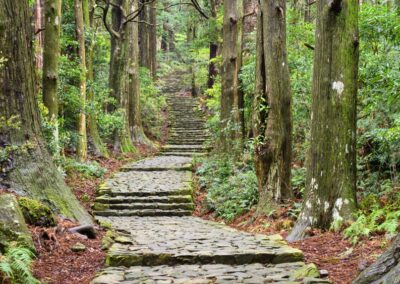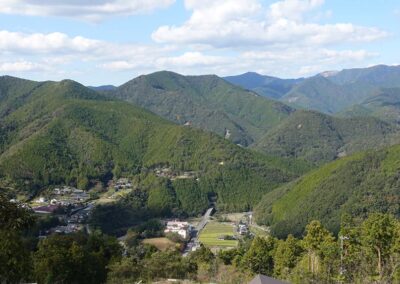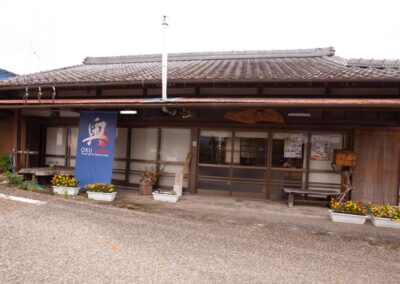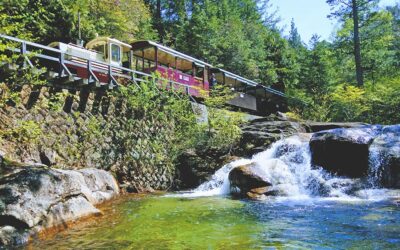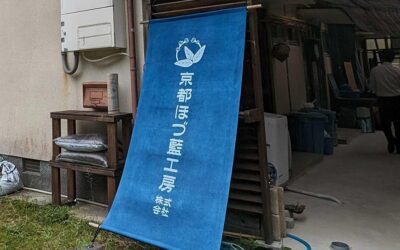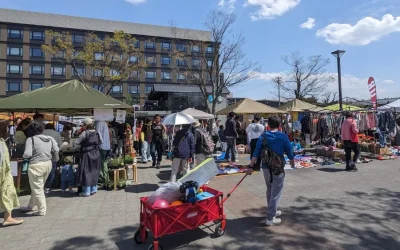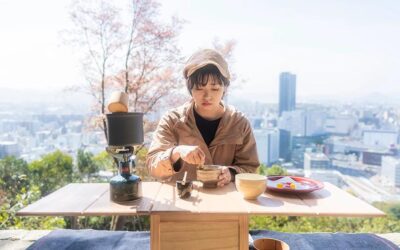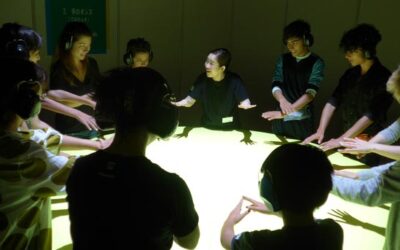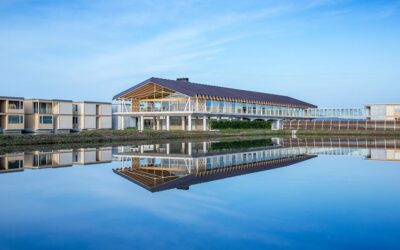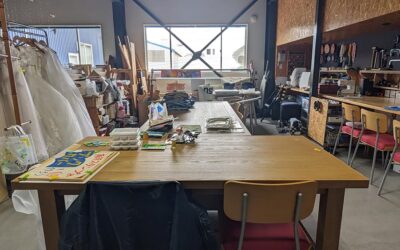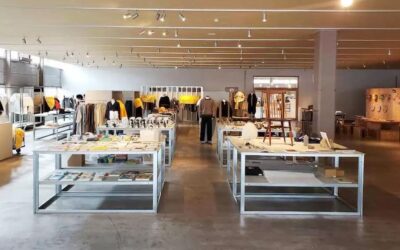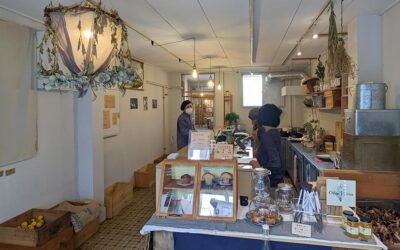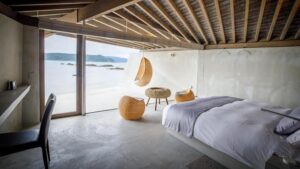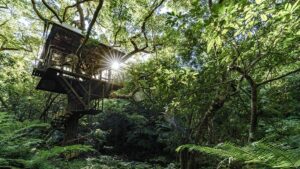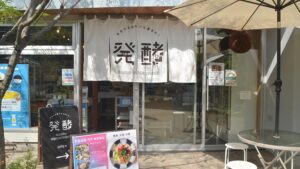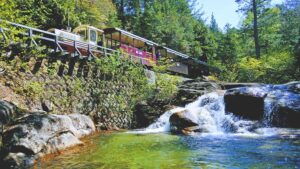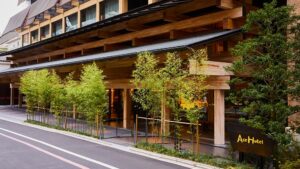Sustainable tourism beginning with local community first
Oku Japan was launched in Japan in 2005 by its founder, Matt Malcomson, to help visitors discover the hidden beauty of Japan. Malcomson fell in love with the less-traveled areas, including Kumano Kodo, and wanted to share them with other travelers. Here we take a deep look at Oku Japan KK, representing Kumano Kodo.
Before then, Kumano Kodo was not as well known outside of Japan. There were also fewer accommodation options available along the 1000-kilometer path. However, Oku Japan feels that Kumano Kodo offers an authentic Japanese experience for its rich history and culture. And the location they’ve picked for the KK office is Chikatsuyu town, a satoyama near the midpoint, which is the best spot for them to offer support to visitors.
“We had challenges introducing tourism to some areas because tourism was not booming then. There were limited accommodations and difficulties adapting to foreign visitors, like preparing for different dietary requirements and tackling language barriers. But now, people have gotten used to it.”
It also helped that Oku Japan dedicated time to communication, addressing worries of local communities, providing support, and showing how Oku Japan’s customer demographic behaves well.
Oku Japan offers two types of tours. Guided tours are led by Japanese guides, while self-guided tours offer walking guides and cultural guides. Oku Japan was the pioneer company in Japan to bring self-guided walking tours to Japan in 2010, which was already popular with western travelers.
In addition, Oku Japan’s customers look for something more than just vacationing in a luxurious hotel with all services provided at one’s convenience. They are looking for authenticity and connection to the place they are visiting. Thus, Oku Japan puts extra care into delivering these authentic experiences.
“[Curating potential locations personally] is a requirement. Of course, we accept feedback from customers and word of mouth. But we have to see with our own eyes whether it will be a good experience for our customers.”
Sustainable tourism by placing the local community’s needs first
Traditional tourism usually comes from an economic viewpoint. In blatant terms, the focus surrounds “how many people can we attract” and “how much money can we make.”
On the other hand, Oku Japan works off an evolved understanding of sanpo yoshi. In terms of sustainable tourism, Oku Japan’s golden rule is to ensure that tourism is beneficial to the local community first so their customers and employees can also be happy.
“Even though Oku Japan deploys tourism assets, we emphasize helping locals preserve their traditions.”
No longer just about user versus maintainer
One element about traditional tourism is how seldom it spares a thought for the existing community. Oku Japan challenges such models by insisting that the impact on the community has the highest level of importance.
“Travelers visiting off-track locations will enjoy the beautiful sights and use local amenities, but it is the locals who maintain them. They don’t get paid to maintain the beautiful farms or clean the toilets, but do so because they want to preserve the beauty of their hometown.”
This dichotomy between user and maintainer is prevalent not just in travel, but also in all aspects of the service industry. The relationship between the two is that customers get served because they paid money, and seldom thought is given to the people behind the scenes who maintain things and make things happen.
“Oku Japan wants to raise awareness for the people who look after the lands. We want to find a way to help locals preserve their environment.”
Insistence on authenticity
Oku Japan also insists on travelers having interaction with the locals. Guides are Japanese, and tours include speaking with locals, planned and unplanned. In fact, before Oku Japan decides on launching a tour, it must satisfy two themes.
“One is Walking, which is the tool to discover the local area. The other is Interacting with Local Community, where we create the environment for visitors to meet the local community. We base it on community-based tourism, not on financial benefit, but on interactivity.
“Locals can offer nice experiences, like Onaka-san, a farmer who grew up in Chikatsuyu town. If he is around when travelers visit, he doesn’t charge anything but guides visitors around to view the beautiful fields and landscape of the town. These chance meetings are serendipity that cannot be created through bookings and are part of authenticity.”
This also sets Oku Japan different from other travel companies. It would be easy to be like other travel companies to put together a travel plan of interesting spots, but that would lack the authenticity Oku Japan insists on.
“We questioned ourselves, ‘if we can put together a tour but it lacked authenticity, is it really sustainable?’ Our conclusion was that we needed constant communication with locals, or else it won’t be established well.”
Oku Japan KK’s office is more than just for work
And it is for the above reasons, it made sense for Oku Japan to open an office along Kumano Kodo. It is not so much a workplace as it is a place where locals and visitors can go to get assistance.
“Having an office is a cost. But if we only think about money, we wouldn’t have the office. Instead, looking at the long term for the locals’ benefit is more important than short-term economic impact.
“Our colleague Uchida maintains communication with the locals at the Kumano Kodo branch. From time to time, there might be a mismatch in the needs of both visitors and locals (often because of language barriers). Sometimes he will drive around and support the travelers. If there’s an emergency, he’ll look after it. Uchida doesn’t only lookout for the travelers, but also sits down with the locals to get to know them and listen to their concerns.”
“Communication is vital for us. We established offices at Kumano Kodo and Nakasendo not because we are a travel company, but because we wanted to be a part of the community. We want to learn about local concerns and industries, and help solve their issues through tourism.”
So in that sense, Uchida and the KK office are the bridge that builds the connection between visitors and the local community.
Minimal environmental impact through limitations and support
An inseparable discussion regarding tourism is how an increase in the number of visitors will impact local environments. Furthermore, Kumano Kodo is one of only two UNESCO World Heritage trails in the world. There is a responsibility to protect the trail from damage.
While Oku Japan’s tours build sustainable communities, the environmental impact is kept minimal. Two key factors ensure this: limiting the number of visitors and government support.
“Even though there’s been an increase in the number of small guesthouses and visitors to Kumano Kodo, there is still a limited number of accommodations. It will not face over-tourism like in Kyoto. Of course, if a big accommodation is built, it might affect the environment, which [Oku Japan] doesn’t want, and local communities will not be in favor of.
“The local government also looks after the destinations very well, ensuring the path is clear and no one steps off it, thus limiting environmental damage. Infrastructures, including toilets, are also at good distances, avoiding any impact on the environment.
“Many stakeholders – efforts of local communities, government and Oku Japan – are working together to preserve Kumano Kodo.”
Preservation and Change can coexist
“Preserving tradition doesn’t mean no change at all. Change is required, and we need an increase in population in local villages, But it doesn’t mean we change drastically, like accepting larger tourism.”
It is a reminder that we shouldn’t fear change. Instead, the keyword should be “adaptation.” Oku Japan’s vision provides the bedrock for its sustainable tourism: through tourism, we preserve the local traditions. They want to support the preservation of local traditions, and tourism is one of the tools.
“Through [Oku Japan’s] activities, we want to preserve the precious treasures of the local community. Tradition is not just the culture and history, but also the tangibles, including people. We don’t want the population to decrease or the farmlands to disappear.
“And it goes beyond just Kumano Kodo. For example, the Maruyama Senmaida rice field in Mie Prefecture. The rice field has always been maintained through the hard work of the locals. They don’t get governmental funding to do it. But now, there is a risk of its disappearance because of old age and decreasing population.”
“Tourism benefits the local economy indirectly. We are still trying to find more direct ways to preserve the community.”
Sustainable tourism in a post-COVID era
Oku Japan started developing tours for the local market late 2020 after COVID struck. But right now, it is still uncertain what travel will look like in the future. Oku Japan sees that there is a possibility people will lean towards privacy.
“Our guided tour is where travelers join other travelers, a mix of people who don’t know each other. The travelers enjoy meeting new people and making new friends. But we expect people will now prefer private tours or self-guided tours.”
And as Japan begins relaxing its border controls to allow visitors to enjoy travel in various parts of the country, we need more tour companies to pave the way for sustainable tourism, even in the face of COVID, and especially in spite of COVID. Interest has been picking up for “life-seeking” travel, as the pandemic offered many a time for self-reflection, realizing the essence of connection with people and nature. Oku Japan’s philosophy of caring for local communities, traditions, and culture offers a model for such sustainable tourism.
Originally published on Zenbird.Media.

